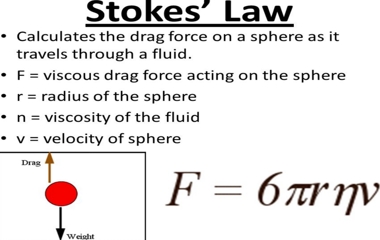When a body falls through a highly viscous liquid, it drags the layer of the liquid immediately in contact with it. This results in a relative motion between the different layers of the liquid. As a result of this, the falling body experiences a viscous force F. Stoke performed many experiments on the motion of small spherical bodies in different fluids and concluded that the viscous force F acting on the spherical body depends on
(i) Co efficient of viscosity η of the liquid
(ii) Radius a of the sphere and
(iii) Velocity v of the spherical body.

Dimensionally it can be proved that: F= k ηav
Experimentally Stoke found that: k = 6π
so, F = 6π ηav
This is Stoke’s law.











